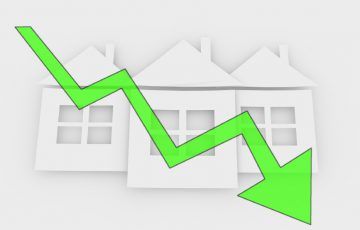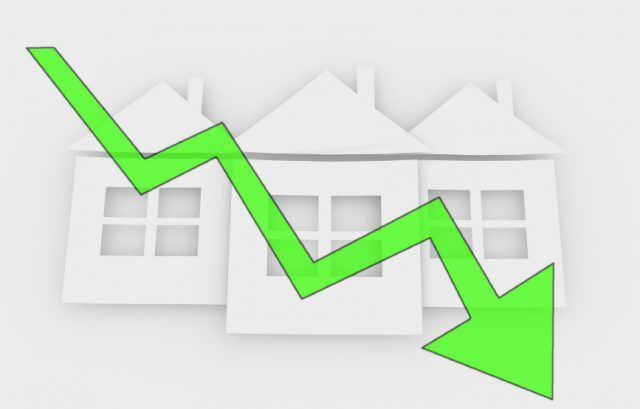As the seventh season of Game of Thrones is set to kick off, online estate agent eMoov.co.uk has looked at how the property markets of the show’s filming locations have fared since the programme aired?
Using property market data from each of the filming locations, eMoov has highlighted where the best destinations to buy property associated with Game of Thrones are…
King’s Landing – Mdina, Malta
Average house price – £294,622
Pros – Robust property market, nice weather
Cons – High murder level, use of wildfire
The property bubble in Mdina has slowed since its use as a filming location in series one. Despite the market slowdown, however, house prices have risen by 2.9%, although this growth has been turbulent. Properties here start at £180,000 and upwards, with the average value standing at £294,622.
Nevertheless, a brand new terraced house overlooking the city will set you back £780,000 or more and the high-end market boasts prices up to £5m.
Slaver’s Bay/Bay of Dragons – Split, Croatia
Average house price – £299,794
Pros – Warm, sunny climate, influx of buyer demand
Cons – Past negative reputation, regeneration yet to complete

How have the Property Markets of Game of Thrones Filming Locations Fared since the Show Aired?
Split has seen the largest increase in property prices since Daenerys Targaryen eradicated slavery in the region and set the residents free. There is typically a warmer and more arid climate than that found in the Seven Kingdoms, and property starts at around £70,000 for something more cosy, but can climb to as much as £123,000 for something more substantial.
The average house price across all property types now averages just below £300,000, following an influx of buyer demand and positive market sentiment.
Beyond the Wall – Iceland
Average house price – £266,000
Pros – Quiet and small population
Cons – Cold winter climate
Beyond the Wall, or Iceland, is home to some of the most affordable house prices in the land, with the cold climate reducing property appeal to potential buyers.
The market saw a brief spike earlier in the show, although buyer demand soon plummeted and stock levels increased. That being said, the region continues to be quaint for those looking to get on the property ladder; first time buyers that like the cold can snap up a home for just £225 per square foot.
Lordsport – North Antrim, Northern Ireland
Average house price – £127,920
Pros – Proud people
Cons – Dark and damp weather, uncertain political landscape
Property on the land of the “ironborn” boasts an average price of £127,920, but this could be on the rise due to the popularity of the show.
Although the average house price in the wider area is fairly affordable, a cottage in the immediate vicinity can go for as much as £350,000.
Winterfell – Newry, Mourne and Down, Northern Ireland
Average house price – £130,322
Pros – Affordable property and appreciating prices
Cons – Uncertainty in the market
The average house price in Newry, Mourne and Down is an affordable £130,322, which has risen by 4% since season one. However, a premium property is substantially more expensive. Entering the high-end of the market can cost you £2,250,000.
Castle Black/Wall – Magheramorne,Northern Ireland
Average house price – £114,932
Pros – Quiet
Cons – Always a cool climate, lots of snow
A property close to the Wall will cost you an average of £114,932. That said, a larger home, such as Castle Black, would still command between £800,000-£1m, based on the current market climate.
The tourist boards of a number of past Game of Thrones filming locations have recorded a surge in visits since their landscapes were screened, with Mdina in Malta, Split in Croatia, Iceland, Morocco, Spain and more benefitting from the huge popularity of the show.
It is possible that Northern Ireland could be the next up-and-coming hotspot for diehard Game of Thrones fans, as well as those looking for affordable price tags.
Belfast is home to the show’s Titanic Studios, where the majority of the inside scenes are filmed, from Winterfell to King’s Landing to Meereen.
The average home in Northern Ireland’s capital goes for £115,868, which is up by 8% on the £107,326 recorded in April 2011, when the show first aired.
This is a great option for property buyers who are keen to get close to the action, with homes costing £100,000 less than the UK average of £220,094.
Russell Quirk, the Founder and CEO of eMoov, says: “Although this is a bit of fun in terms of valuing fictional properties in the Game of Thrones, the success of the show has a very real impact on the areas in which it is filmed, which can boost the economy and in turn help to stimulate property prices.
“Northern Ireland provides an ideal property investment opportunity for diehard Game of Thrones fans, with much lower average house prices than the rest of the UK. Such a popular show being based there has certainly helped bring jobs and industry to the surrounding communities, and helps showcase the stunning scenery boosting tourism in the process.”








